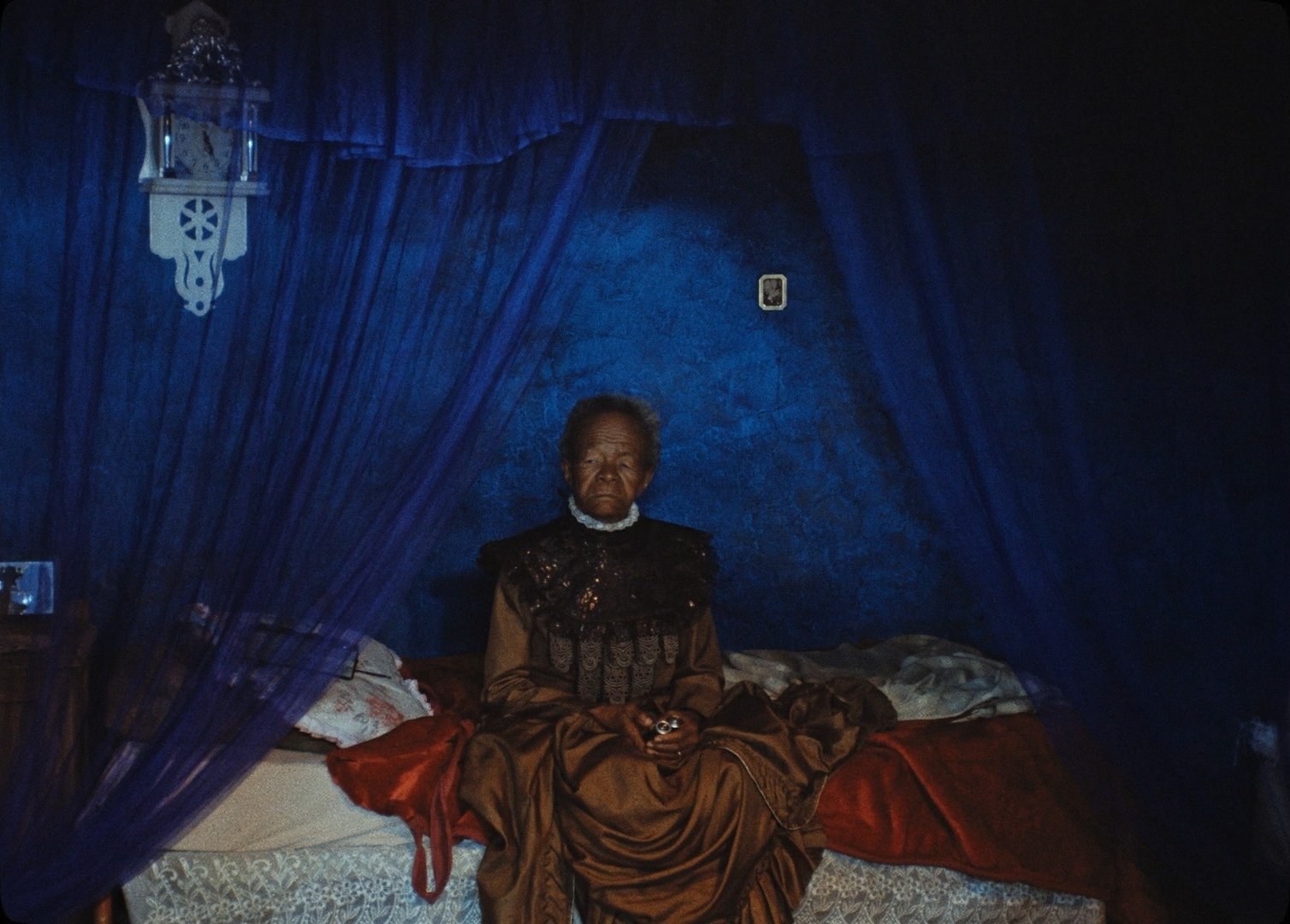This is Not a Burial, It’s a Resurrection (2019)
QFS No. 124 - The invitation for October 11, 2023
I know this will come as a shock to many of you, but this will be our first Quarantine Film Society selection from Lesotho. The country has about 2 million people – which is, I believe, still smaller than what the population of Los Angeles would be if the San Fernando Valley succession happened in 2002. Lesotho is completely surrounded by South Africa and the country’s motto was “No, not Swaziland – the other one.” (At least that’s what I assume it was before Swaziland changed their name to Eswatini.) Lesotho remains a really great answer in geographic trivia. That’s about all I know. The fact that there exists a film from Lesotho (pronounced “le-SUE-to”)* that’s available for us to see it pretty terrific and I want us to see it.
Also, this is our first film from anywhere in Africa since our seventh ever selection way back in 2020, the obscure Air Conditioner (2020, QFS No. 7) from Angola. This is a shameful tally, I admit, and it’s mostly due to me and the QFS Selection Committee knowing almost nothing about films that come out of Africa. It’s also true that very few films from Africa are being widely distributed in the US. Nollywood – the moniker given to Nigerian films, the most prolific filmmaking nation outside of India – is still completely obscure to me, but I hope to select a film from there in the future. Regardless, three years is a long time between films from an entire region of the world. The QFS Selection Committee Member responsible for this digression has been reassigned.
As for This is Not a Burial, It’s a Resurrection** – this is not a movie I know a whole lot about, other than it was featured on the Criterion Channel which got me curious to read a tiny bit about it earlier this year. Enough to get me interested in seeing it. As you all know by now, I firmly believe in film’s ability to transport you into a person, a being, or a place completely and utterly unknown to you and, if done well, can take you on a journey that is extremely unique and specific to that world but touches on something of a shared humanity we have with people unlike us. I hope this week’s selection is able to do just that.
Either way, it will be pretty fun to take a trip to Lesotho for a couple hours. Join me in watching This is Not a Burial, It’s a Resurrection and we’ll discuss!
*Believe it or not, I have actually been to and stayed in Swaziland for a week, back in 2010 (before it was renamed Eswatini). I was helping a friend shoot a documentary in Swaziland and South Africa. It is here were I learned, crucially, how to correctly pronounce “Lesotho.”
**This is one of our few QFS selections where the title could also be a complete sentence. The others: Knives Out (2019, QFS No. 6), A Man Escaped (1956, QFS No. 9), Dolemite is My Name (2019, QFS No. 15), The Lady Vanishes (1936, QFS No. 24), You Can’t Take it With You (1938, QFS No. 47), Escape from New York (1981, QFS No. 61), Flee (2021, QFS No. 69), Enter the Dragon (1973, QFS No. 73), One Flew Over the Cuckoo’s Nest (1975, QFS No. 75) and though it might be not intended this way, How Green Was My Valley (1941, QFS No. 121) could be an exclamatory sentence or a question. True, Knives Out, Escape from New York, Enter the Dragon and Flee all would have to be commands (imperatives, if you will: “Flee!”), I think it’s hilarious that someone could order you to “Enter the Dragon” in a non-ironic way. This is the important high level analysis you can expect from the crack team here at QFS.
Reactions and Analyses
I can safely say, this is my favorite film from Lesotho. The best way to describe this movie is that it is a visual poem. Everything is lyrical, from the narration to the vistas and the composition. There’s quite a long time until a plot device appears, and when it does it has a familiarity to it - a simple person fighting for tradition and standing up to “progress.” A faceless march of time that will literally wash away this place.
The pace is languid and so much rests on the window Mantoa’s face. Portrayed by the late Mary Twala Mhlongo, her face tells so much of the story. She is the strength of the story as much as the visuals are. This is Not a Burial is more fable than movie.
Pace is such an fascinating thing in film. This movie isn’t that long as a matter of real time, but it feels long. In part because the plot is thin but it also makes sense because it feels like the pace of village life. The pace of the film mimicking the pace of the locale.
The “burial” in question is her own - she prepares for it and asks a fellow villager to dig a grave for her. She ends up having to do it herself, covered in sweat, under the cover of darkness. The “resurrection” - here’s where the group had some disagreement about. Not that the resurrection as such doesn’t happen, but it’s very subtle and at first I didn’t quite grasp it. Mantoa decides to stay on the land and not leave with her fellow villagers who are being relocated to the capital Maseru (yes I had to look up the capital of Lesotho), moving towards … soldiers? Government workers at the very least. And she disrobes, moving towards them to a certain death.
But - how does it, her death, happen? Do they shoot her? It doesn’t seem like they’d concern themselves too much with one 80-year-old (naked) woman to actually kill her - they could just simply work around her. Perhaps it doesn’t matter, what matters is that this is her death or it will be soon. Her “burial,” and her “resurrection” is the little girl who watches her in this act of martydom - yes?
To me, that felt a little thin. To others, it made sense. For a film that’s a visual poem and rests on lyricism, concrete answers are not necessary. The film is a tone, a mood, and on that alone it’s really quite lovely to watch and explore its meanings. The film’s title could easily be This is not a film, it’s a fable - a lyrical visual poem that feels as if it’s a local legend one would share with a friend. A fable that’s bittersweet, hopeful and a cautionary tale of indigenous peoples facing the unreleting march of time and modernity.



